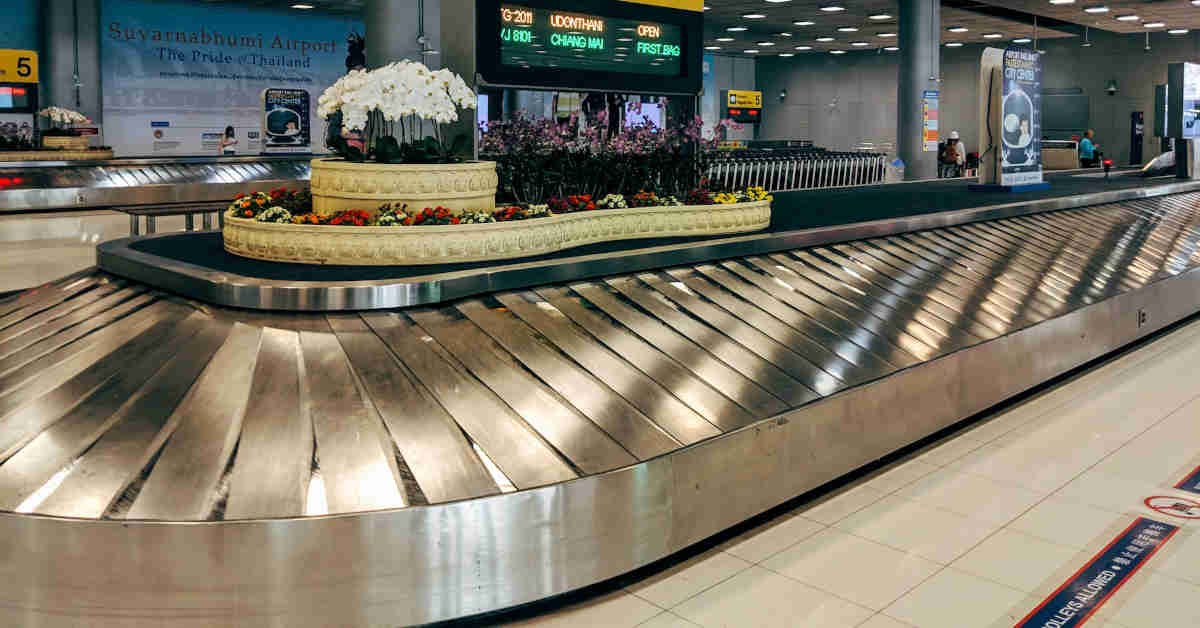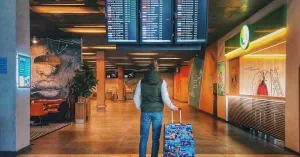Losing your checked baggage is one of the most disruptive experiences that can happen on your trip. Thankfully, there are things that you can do to significantly decrease the chances of this happening. Also, if your bag is delayed, you can take steps to minimize the disruption caused. You can then continue with your trip stress-free, while waiting for your bag to be found.
In this post, we will go through a variety of ways to increase the chances that your bags reach your destination when you do.
What to Do When Booking Your Flight
Book All Your Flights with the Same Airline
If your checked bag goes missing, having only one airline to contact is much easier than dealing with multiple airlines. They may be more reluctant to accept responsibility, instead directing you to the other airline.
If your trip includes a connection, travelling with the same airline significantly improves the chances of your bag making the connecting flight.
Book a Direct Flight
Traveling on a direct flight means that your airline doesn’t have to transfer your bag to a connecting flight. This cuts the risk of your checked baggage not making it to your next flight, especially on a tight connection. If the connection is with another airline, baggage handlers will require more time to transfer your bags to the next plane.
Pay For Priority Baggage
If you have paid for priority baggage, your bags will be one of the first to reach the baggage carousel for collection. This is especially useful if you need to collect your bags for a tight connection.
Also, if baggage is going to be gate-checked on your flight due to limited cabin space, bags without priority baggage will be offloaded first.
Familiarize Yourself with Your Airline’s Delayed Baggage Policies
You can find information on your airline’s lost baggage policies on their website. It’s a good idea to become familiar with the policies before you commence your trip. Losing your baggage can be a stressful experience – knowing what you need to do beforehand can alleviate that anxiety.
Hot Tip: Prepare a draft email for your airline in case your checked bag does not reach its destination. Follow the requirements listed on the airline’s delayed baggage website page. Make sure to include photos and measurements of your baggage.
Tips to Protect Your Bags
Invest in Baggage Insurance
Your travel insurance policy or airline loyalty program may already include a baggage insurance provision. Some credit cards also offer free travel insurance. Ensure that the policy you have meets your specific needs.
Invest in a GPS or Bluetooth Baggage Tracker
If you are a frequent traveler or overly concerned about losing your checked bags, you may want to invest in a baggage tracker. Bluetooth trackers are cheaper but only have a limited range. GPS trackers are more expensive but have a much longer range.
Choose a Unique Luggage Color
Choosing a unique luggage color can help you easily identify your luggage at baggage claim. This can also help prevent someone else from mistakenly taking your luggage. Consider choosing a bright or bold color for your luggage or add a distinctive luggage strap or sticker to make it stand out.
What to Do Before You Arrive at the Airport
Using Baggage Tags for Identification
To improve the chances of your delayed bags getting back to you, attach luggage tags to each bag. You should also use baggage tags on your carry-on bags. If there is no baggage space left in the plane cabin, your hand luggage many be gate-checked.
Use durable tags that will withstand the rigors of travel.
Ensure that your contact information is current on each tag:
- Name (as on boarding pass). This will make it easier for airline staff to find you on their passenger list
- Email address
- Phone number (including country code if traveling internationally)
Hot Tip: It’s not recommended to include your home address on your checked baggage tag. This is a signal to potential thieves that your home will be unoccupied. If an airline is to return your bags, they would contact you before delivering them.
Make Your Bag Stand Out from the Crowd
Use colorful bag tags. Make sure that you remove tags and baggage stickers from earlier trips with outdated information. This will avoid confusing ground staff when handling your checked bags.
You can apply stickers to your bag.
Hot Tip: Avoid using stickers which show your country of origin. This may evoke a negative reaction in some parts of the world.
Use distinctive baggage straps. They have the added benefit of keeping your bag intact if it falls apart during transit.
Protect Your Bag from Being Damaged
Remove loose straps and tuck away bag handles so that your bag won’t catch on anything while being handled by the airline.
Secure Your Bags
Consider locking your bags. If you are travelling domestically within the US, then you can use a TSA lock. For other countries, you may want to consider either keeping your bags unlocked or using a separate padlock. Security may damage your suitcase or break your integrated lock if they do not have a TSA unlocking tool.
Hot Tip: You may want to consider using plastic zip ties instead. You can include extra zip ties in your bag, with a note to security to relock your bag after they have finished searching it.
Packing Tips
Organize the contents of your bags. Use packing cubes to arrange your clothes and other belongings. If security personnel decide to examine the contents of your bag, it can be done more quickly with a sorted bag. This will give you more time if you need to catch a connecting flight.
Review what you have packed in your checked bag. A good approach is to not pack anything that you cannot risk losing. You should not pack any item of monetary or sentimental value in your checked bags.
The following items should always be packed in your carry-on bag:
- Medication
- Electronics
- Passport and other travel documents
- Fragile items
- Jewelry (although you may want to reconsider bringing anything of significant value on your trip)
- Cash and credit cards
- At least one day’s change of clothes
Include contact info (as per baggage tags above) and a copy of your trip itinerary, and place inside your bag in a prominent position. This will help get your bag back to you if your tags fall off.
Take a photo of the interior of your packed bag. Also, make a list of your bag’s contents and keep a copy of this list on your phone and in your carry-on bag. This will be helpful if you need to make a claim with the airline or your travel insurance provider.
If travelling with others, consider cross-packing. Instead of putting all your eggs in one basket, you can share your packing space with others, storing some of your clothes in each other’s bags. If any of your bags are delayed or lost, you’ll still have enough belongings to make a start on your trip.
What to Do at the Airport
At check-in, make sure that your baggage receipt details are correct as are the airline’s baggage tags on your checked bags.
Once the check-in agent attaches your baggage tags, take a photo of your tagged bags.
Confirm at what point you will have to collect your bags.
Keep track of your checked bag by logging on to your airline’s baggage tracing service throughout your trip. Most major carriers offer this service where you can track the current location of your bag. This can be done through your airline’s phone app or on their website.
Have your checked baggage plastic-wrapped at the airport. This will discourage potential thieves from breaking into your bags. It has the added benefit of protecting your bag from damage.
After you arrive at your destination, go to the baggage claim area as soon as you can. You can position yourself at the point where baggage is delivered onto the carousel, minimizing the opportunity for someone to take your bag (either by accident or deliberately).
Final Thoughts
As you can see, there is a lot that you can do to minimize the chances of your checked bag being delayed or lost, with many of these tips coming at a nominal cost.
Summing up, the most important preventative measures are:
- Fly with the same airline from origin to destination, preferably on a direct or non-stop flight. If you have any layovers, choose longer ones (at least 1 hour for domestic flights, 2 hours international) to give baggage handlers sufficient time to transfer your bag to your next flight.
- Make sure that the tags on your bags have your current contact information.
- Check and keep your baggage receipts at check-in.
- Pack a change of clothes in your carry-on bag, in the event your checked bag is delayed.
I hope you found this article helpful. Please let me know in the comments below on what you do to ensure that your bags make it to your destination when you do.



